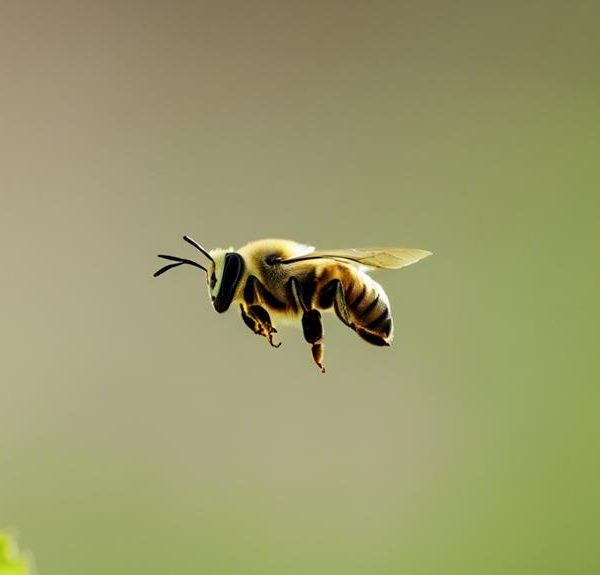Dive into the fascinating life cycle of leaf cutter bees and discover the factors that determine their lifespan.
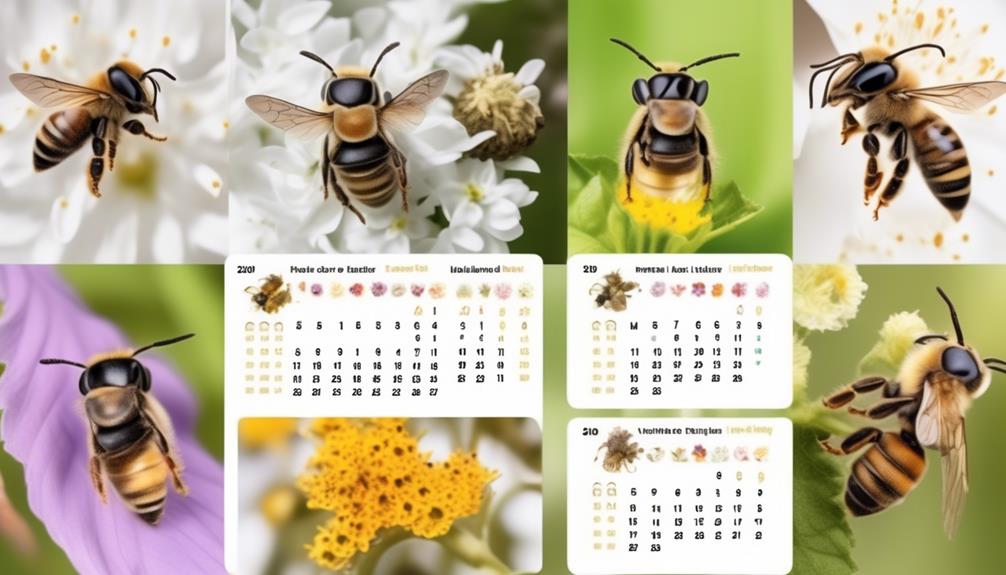
How Long Do Leaf Cutter Bees Live
Just as the seasons cycle in a year, the life of leaf cutter bees also follows a specific pattern. You might have seen these intriguing insects busily cutting neat circles or ovals out of leaves, but have you wondered about their lifespan?
It's a fascinating topic, for sure. The lifespan of leaf cutter bees is influenced by various factors like environment, diet, and their role in the colony. But how long do they really live?
Well, you'll have to stick around to uncover that mystery.
Key Takeaways
- Leaf cutter bees have a lifespan of approximately five to seven weeks in ideal conditions.
- Factors such as temperature, food availability, predators, and disease can significantly impact their lifespan.
- Leaf cutter bees play a crucial role in pollinating a wide range of plants, including crops that honeybees can't.
- They contribute to the ecosystem by creating nesting habitats and enriching the soil, leading to significant and lasting effects on plant propagation, crop production, and soil fertility.
Understanding Leaf Cutter Bees
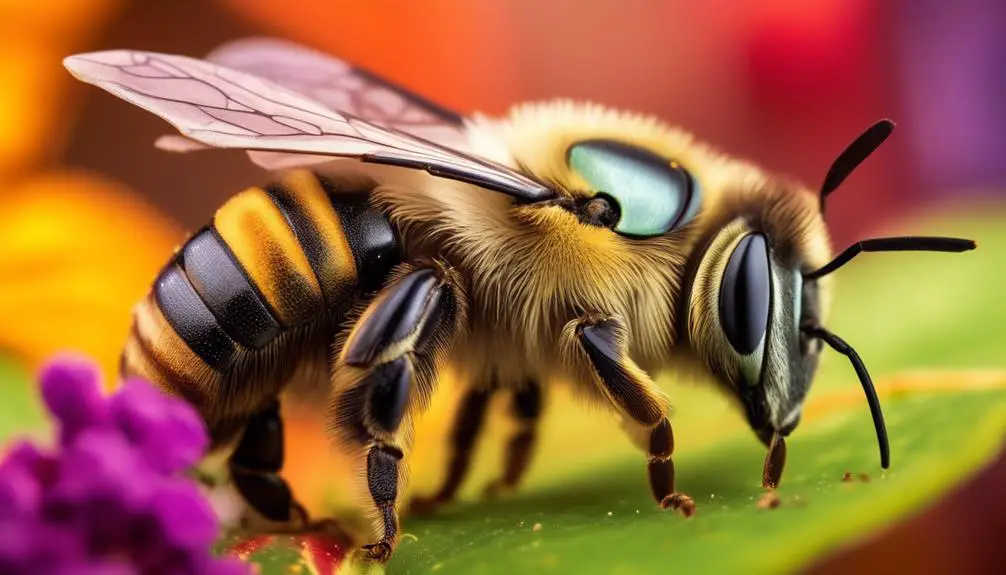
To fully appreciate the lifespan of leaf cutter bees, you need to delve into their unique biology and behavior, both of which make them an intriguing focus of study in the world of entomology.
These bees, scientifically known as Megachilidae, are solitary creatures, meaning they don't live in colonies like honeybees or bumblebees. Instead, each female leaf cutter bee independently builds and provisions a nest for her offspring.
You'll find that they're aptly named for their remarkable behavior of cutting neat, circular pieces from leaves. They use these leaf fragments to construct individual cells within their nests. Each cell is then filled with a mixture of nectar and pollen before the female lays an egg within it. This behavior ensures that the developing larva has food immediately available upon hatching.
As for their biology, you should note that leaf cutter bees are quite distinct. They're robust and hairy, with a strong jaw for cutting leaves. Females carry pollen on their abdomen instead of their legs, which is quite unusual in the bee world.
Understanding these aspects of leaf cutter bees provides a foundation for exploring their lifespan and their role in our ecosystem.
Leaf Cutter Bees' Life Cycle

Now, let's delve into the fascinating life cycle of leaf cutter bees, a process that's as unique and intriguing as the bees themselves. Their lifecycle begins as an egg, progressing through the larval, pupal, and adult stages, much like other bees. However, their nesting habits differ significantly.
Here's a snapshot of their life stages in a markdown table below:
Stage | Duration | Description |
|---|---|---|
Egg | 1-2 weeks | The queen bee lays an egg in a leaf-cell. |
Larva | 2 weeks | The hatched larva feeds on pollen and nectar. |
Pupa | 2-3 weeks | The larva spins a cocoon and metamorphoses. |
Adult | 6-8 weeks | The fully formed adult bee emerges to forage and mate. |
What sets leaf cutter bees apart is their maternal instinct. The female bees create a nest from leaf pieces, often in soft, rotting wood or in the ground. In each leaf-cell, they lay an egg, and provide a food supply of pollen and nectar. This meticulous process ensures the survival of the next generation. Their life cycle, though short, is filled with diligent work and dedication, reflecting their crucial role in our ecosystem.
Factors Affecting Their Lifespan
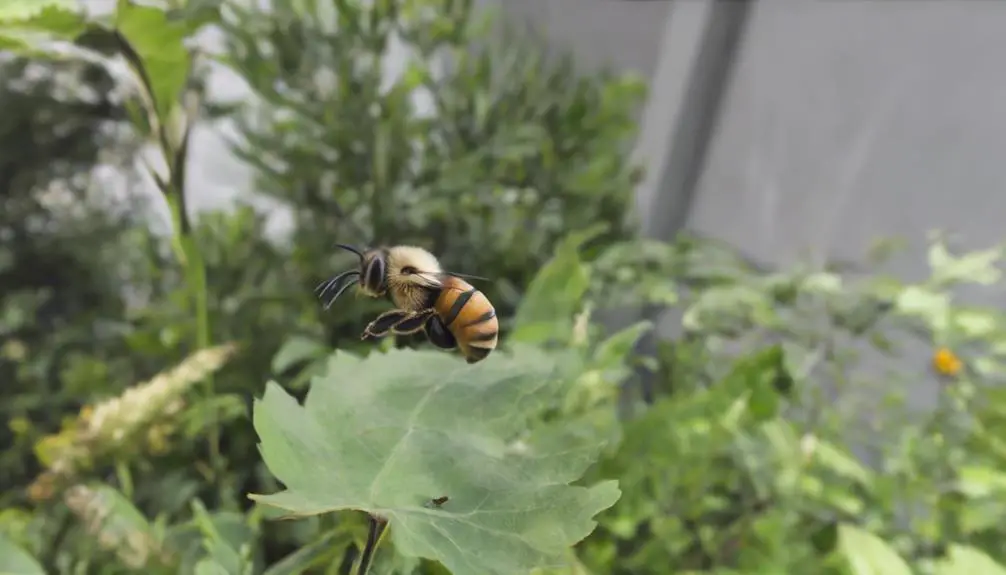
Understanding the factors that can impact the lifespan of leaf cutter bees requires a thorough look at their living conditions, diet, predators, and environmental stressors. You'll find that these elements can significantly alter the duration of their lives.
Living conditions, for instance, play a crucial role. These bees thrive in warm, dry climates and their lifespan can be shortened in cold, wet environments. They're solitary insects, but they often live in close proximity to each other for protection. If their habitat is destroyed or disturbed, it can lead to increased stress and decreased lifespan.
Diet is another factor. Leaf cutter bees feed on nectar and pollen, and a lack of these resources can reduce their lifespan. Their larvae also need leaf pieces for cocoon formation, and a shortage can lead to undernourished adults.
Predators, including birds, spiders, and other insects, pose a constant threat to their survival. Environmental stressors, such as pesticides or climate change, can also harm these bees, shortening their lives.
Understanding these factors is essential in preserving leaf cutter bees, as their pollination capabilities are vital for many plant species. It's clear that their lifespan is intricately connected to their environment and lifestyle.
The Average Lifespan of Leaf Cutter Bees
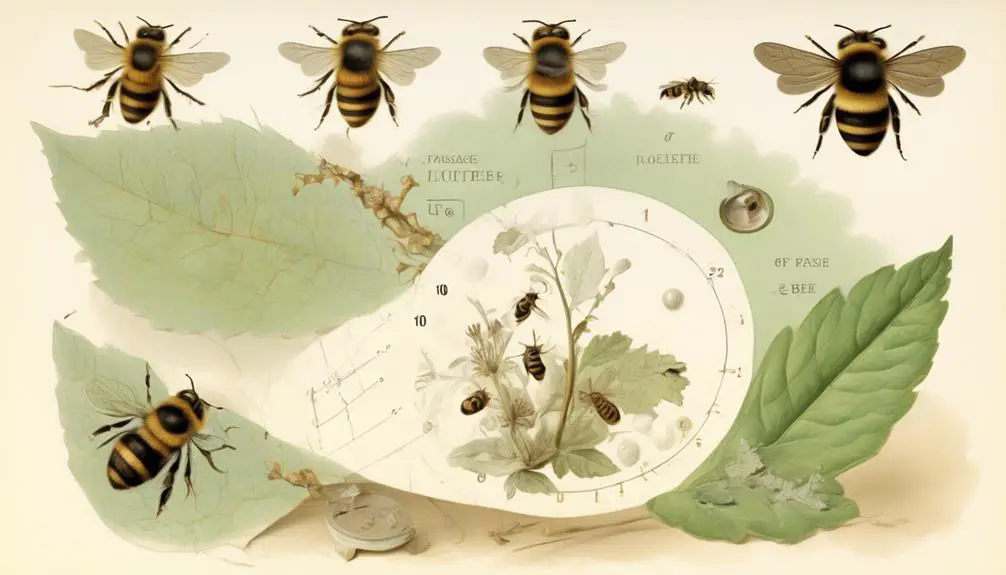
Given the numerous factors that can influence their longevity, leaf cutter bees, on average, have a relatively short lifespan. In ideal conditions, these industrious creatures live approximately five to seven weeks. However, this period can shorten or extend depending on environmental factors such as temperature, food availability, and presence of predators or disease.
Let's understand this better with the help of a table:
Factors | Ideal Scenario | Impact on Lifespan |
|---|---|---|
Temperature | Moderate (20-30°C) | High or low temperatures can reduce their lifespan. |
Food Availability | Abundant | Lack of food can lead to starvation and early death. |
Predators/Disease | Absence | Presence can significantly decrease their lifespan. |
You'll notice that the lifespan of leaf cutter bees is quite dynamic, heavily depending on the conditions they're exposed to. Unfortunately, due to their short lifespan, these bees rely heavily on their ability to reproduce quickly and in large numbers to ensure the survival of their species. In conclusion, while leaf cutter bees might not have a long life, they have a critical role in the ecosystem, making every moment of their existence count.
Leaf Cutter Bees' Role in Ecosystem
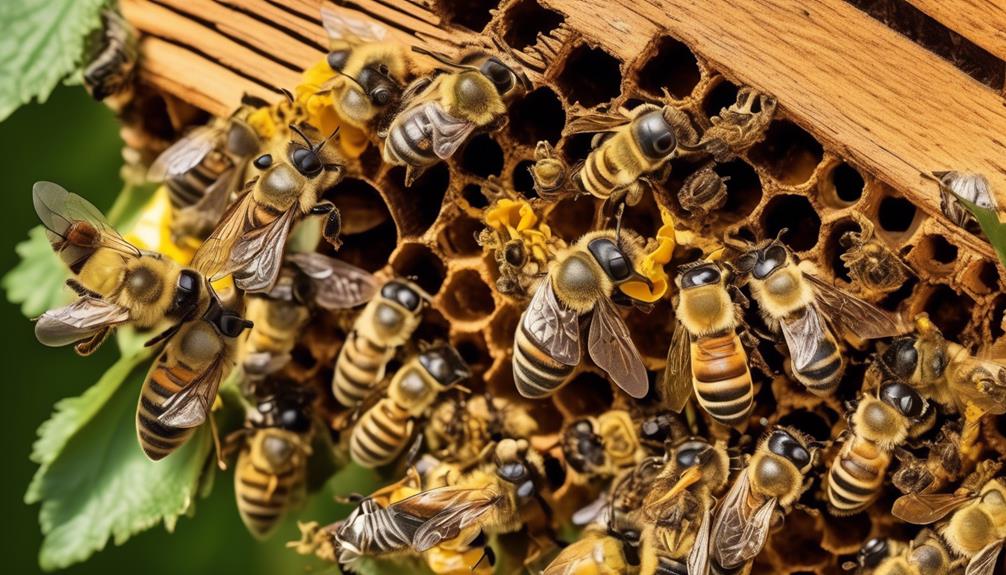
Despite their short lives, leaf cutter bees play a crucial role in the ecosystem, primarily through their exceptional pollination abilities. Unlike honeybees, who tend to focus on a single type of flower, leaf cutter bees are generalists. They'll visit a wide range of plants, spreading pollen far and wide.
This versatility makes them invaluable pollinators. They can pollinate crops that honeybees can't, such as alfalfa and blueberries. These bees don't just carry pollen on their legs, they also transport it on the hairs of their abdomen. This method allows for more effective pollination as they shuffle around the flower's reproductive parts.
But that's not all. Leaf cutter bees also contribute to the ecosystem by creating nesting habitats. They cut leaves to line their nests, creating small chambers in which to lay their eggs. These nests often help enrich the soil, as they decay over time.
In a nutshell, leaf cutter bees' role in the ecosystem is irreplaceable. They ensure the propagation of various plant species, contribute to crop production, and enhance soil fertility. So, while they may not live long, their impact is significant and lasting.
Conclusion
In essence, leaf cutter bees play a crucial role in our ecosystem. Their lifespan, influenced by factors like climate and predators, averages from 2 to 8 weeks. Understanding their life cycle can shed light on their survival strategies and environmental contributions.
It's a testament to how even the smallest creatures have significant roles in maintaining ecological balance. So, next time you see a leaf cutter bee, remember, it's out there doing its part to keep our world vibrant and alive.


